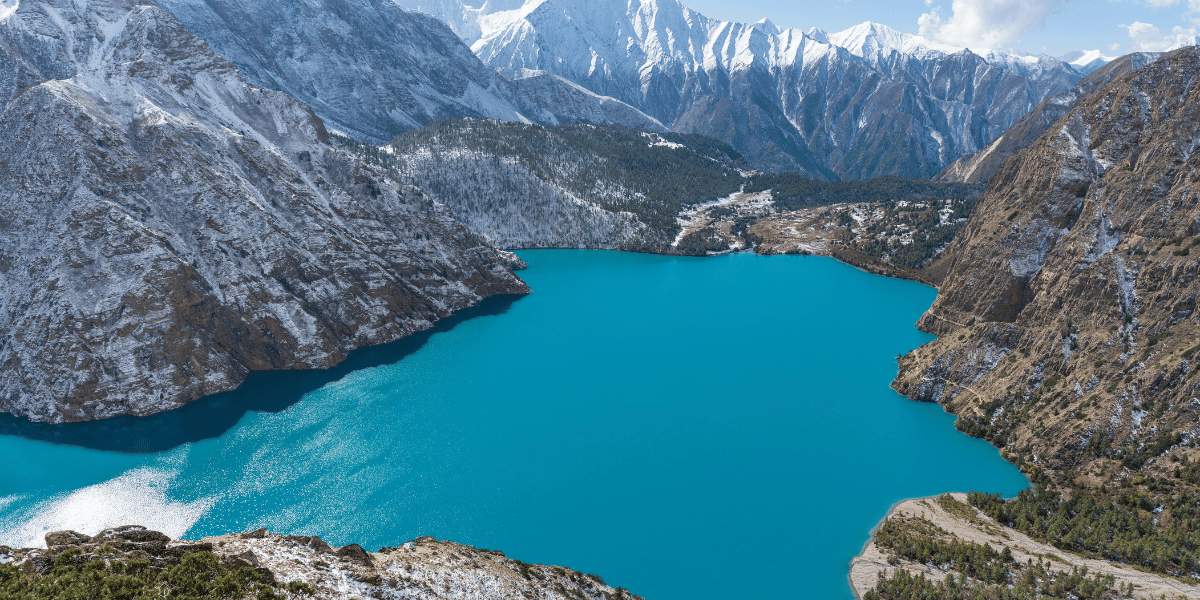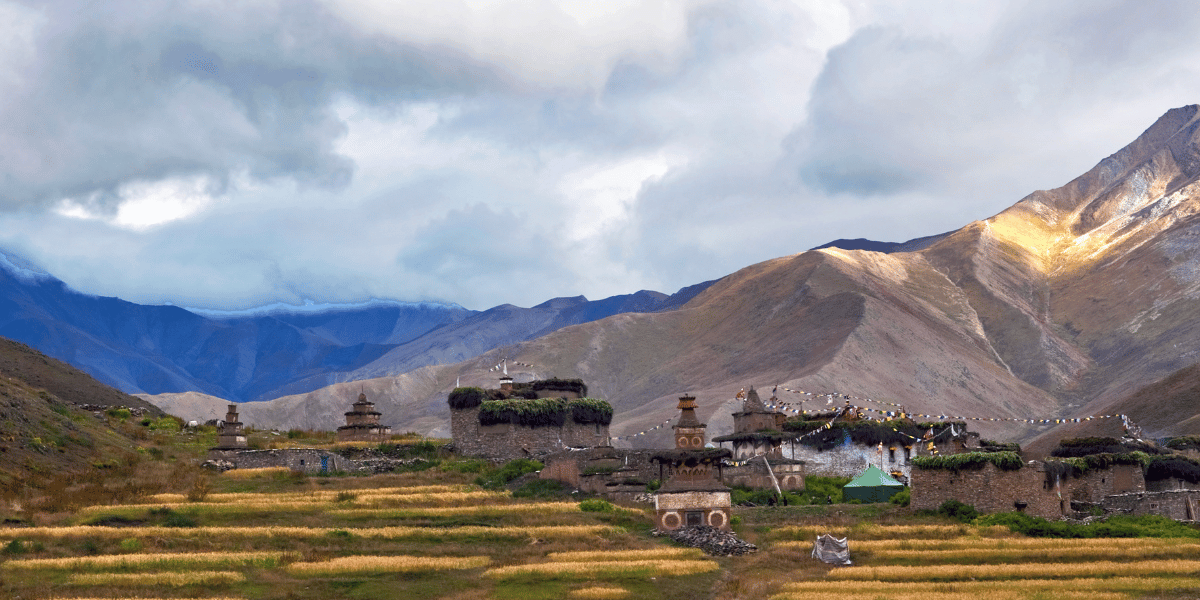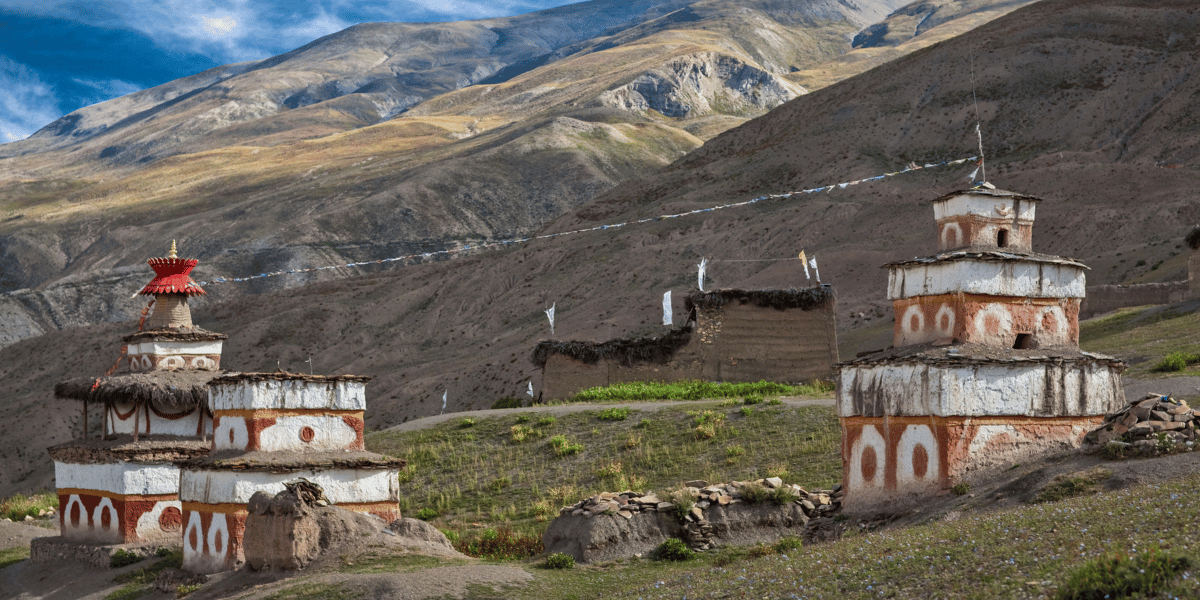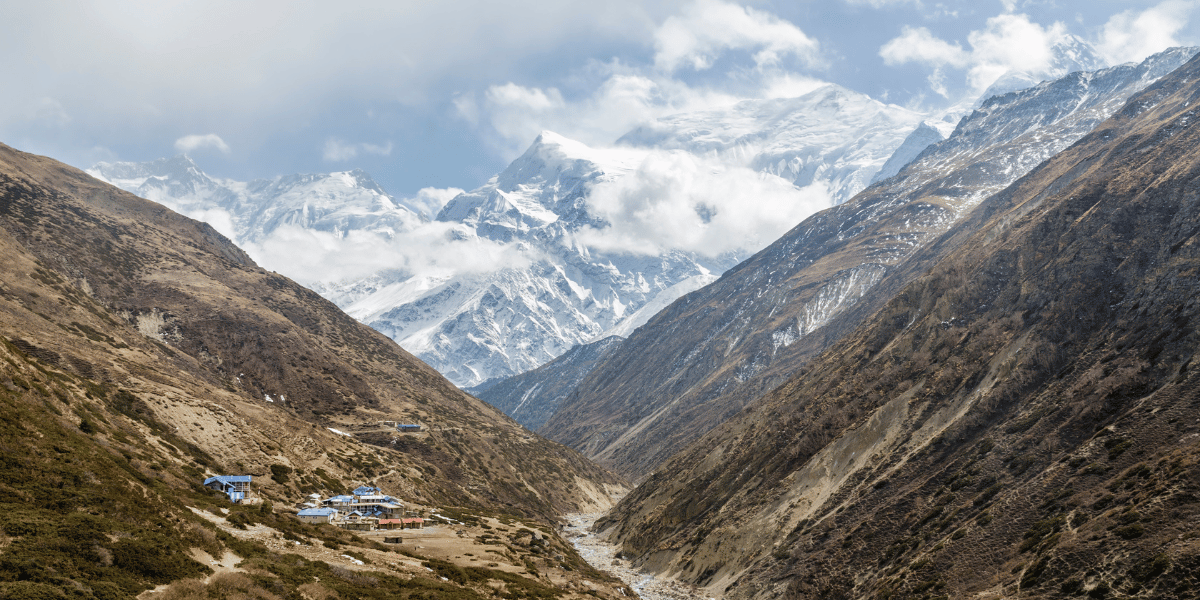Trekking in the Dolpo region is an adventure and a privilege to witness Nepal's remote and beautiful side. Dolpa, also known as Dolpo, is a breathtaking and isolated region in the Himalayas. It is home to Shey Phoksundo National Park, which is the largest national park in Nepal. Set out on the Lower Dolpo Circuit Trek to explore a rugged and breathtaking trail featuring serene coloured lakes, fast-flowing rivers, stunning gorges, and high mountain passes. The Dolpo region stands out from other trekking destinations due to its minimal development, distinctive geography featuring high mountain passes and arid landscapes, and the presence of the traditional Bon-Po religion, making it a unique place to explore. This trek involves camping since there are limited lodging facilities due to its remote location, which adds to the uniqueness and thrill of the entire trip. Join us on a 19-day camping trek to discover the breathtaking destinations Nepal has to offer. Located far from modern civilisation, this wilderness offers a glimpse of simplicity and pure nature, with stunning geography and diverse wildlife. This trek is perfect for those looking to explore the uncharted beauty of Nepal.
During the trek, you'll have the opportunity to experience a wide range of natural beauties, from ancient wonders to the remote and wild landscapes of untouched nature in diverse regions, allowing you to explore the extensive geography of Nepal. Explore various sights, from ancient landmarks to scenic walks in the highlands of the Dolpo area. Some of the major highlights during the trek are listed below.
Kathmandu - The Capital City
Your journey will begin in Kathmandu, where you will arrive before starting your trip. During your stay in Kathmandu before heading to Dolpo, you will explore the city area and visit iconic places listed in UNESCO World Heritage Sites, which include religious sites and former royal palaces.
Kathmandu Durbar Square is a former royal palace situated in the heart of Kathmandu, showcasing numerous ancient landmarks that will captivate you with their beauty. The square contains numerous historical landmarks like temples, statues, and beautiful buildings with intricate designs. One of the popular sites in Kathmandu is Swayambhunath, also known as Monkey Temple, located on a small hill within the valley. This place is dedicated to Hindu and Buddhist religions, promoting religious harmony. This place offers a panoramic view of the city, which is one of its major highlights. The next stop is the Pashupatinath temple, a Hindu temple dedicated to the deity Shiva and highly respected among Hindus. Exploring the pilgrimage site reveals numerous architectural structures adorned with intricate and authentic Nepali art and crafts, providing a glimpse into Nepal's rich artistic history. The landmarks were primarily constructed during the Malla era, showcasing pagoda-style architecture. Last but not least, Boudhanath Stupa is a significant Buddhist religious site, considered one of the most important Buddhist sites. This site showcases one of the largest Buddhist stupas, filled with devoted worshippers paying homage daily. The entire stupa is adorned with colourful prayer flags, thought to carry peace globally. Despite the crowded nature of the place, individuals find spiritual tranquilly there.
Juphal - Gateway to Dolpo
Juphal, situated at an elevation of 2,400m/7,844 ft, serves as the starting point of the trek in Dolpo district, Karnali Province. Juphal serves as the initial point of the trek due to its transportation facilities that connect the Dolpo region to other parts of the country. Juphal boasts an airport as the main entry point to Shey Phoksundo National Park. The location is nestled among picturesque hills and stands out as one of the most advanced areas in the region. From Juphal, you can either take a flight or drive before beginning your trekking journey on foot.
Villages During the Trek
During your trek, you will stroll through charming villages situated in breathtaking locations. Dolpo is a rural area with few settlements along the way. The villages have beautiful locations and some of the most hospitable people. These locations offer a unique setting with panoramic views of the surrounding landscapes. Some are even situated in remote areas, creating a beautiful sight in the arid region. The Dolpo region is characterised by arid areas with minimal vegetation. Despite this, the small villages scattered throughout the region offer a unique and unforgettable experience. The majority of the residents in this settlement practice a unique religion influenced by Tibet, particularly the Dolpo Region. Many follow the Bon-Po religion, an ancient Tibetan Buddhist belief. You will come across some notable villages, such as Tarakot, Khani Gaon, Dho Tarap, and Ringmo. The locations offer beautiful scenery and accommodation options like tea houses and local lodges, allowing visitors to immerse themselves in the local culture.
Shey Phoksundo Lake
Shey Phoksundo Lake is one of the major highlights of the trek, as it is one of the most beautiful lakes in Nepal and has a vibrant turquoise colour. The lake's unique Y-shape and constantly changing colour make it a prominent attraction all year round, situated at an elevation of 3,611 m. It is believed that the colours of the lake change as a result of lightning strikes, as per the locals. The colour of the oligotrophic lake shifts from green to a vibrant turquoise blue depending on the season. The lake is a popular attraction and holds significant religious value for the locals. This lake is considered sacred by the locals, associated with their beliefs, and people are strictly prohibited from bathing or swimming in it.
High Trekking Passes
Dolpo is located at a high elevation, with an average altitude ranging from 3,000 to over 5,000m. The region's high elevation and unique geography feature numerous trekking passes over 5,000 m that must be crossed to reach certain destinations. The pass is accessible from April to November, but it is covered in thick snow during other times of the year, which poses a risk while crossing it. Traversing these mountain passes can be quite challenging during the trek, requiring a strenuous uphill climb. This is due to the steep climb in the desert mountains, which can quickly drain a person's energy. During the Pass Days, you should start early in the morning and aim to cross the pass before noon to avoid the strong winds that make walking difficult. During your Lower Dolpo Circuit trek, you will come across two high trekking passes that are above 5000m, listed below.
Numa La Pass. [5,309m/17,418 ft]
The Numa La Pass is the first challenging pass you will encounter on the Lower Dolpo Circuit trek. There are two Numa La Passes: one located in the south and another in the north. The North Numa La Pass stands at an elevation of 5,238m and is accessible from April to November. Contrary to that, the South Numa La Pass is situated at an elevation of 5,309m and stays accessible all year round. On the Lower Dolpo Circuit trek, you'll traverse the South Pass, which is considered slightly easier than the North Pass. When going on a trek to high passes, it's advisable to begin your journey early in the morning to steer clear of the forceful winds that could pose challenges and potential dangers. To reach the Numa La Pass, start your trek from a location known as Tokyu. Once you cross the pass, you'll arrive at Danigar, your last destination for the day.
Baga La Pass. [5,169m/16,959 ft]
The Baga La Pass is the second challenging pass you will encounter on the Lower Dolpo Circuit trek. The elevation of Baga la Pass is 5,169 metres above sea level, which is another amazing high pass that you will encounter during this trek. Starting from Danigar, you will cross this pass and reach Yak Kharka for the overnight stay before moving forward. From the pass, you have the opportunity to witness a breathtaking view of the never-ending chain of snow-capped mountains. Additionally, the surrounding area is characterised by a vast deposit of dry soil devoid of any vegetation, which is a direct result of the brutal climate in this region.
What to Expect?
This trek in Nepal is considered one of the more challenging ones as it leads you through the rural region in western Nepal. While trekking, you will be captivated by the sights and experiences, as the location is far from modern civilisation, showcasing simplicity and untouched natural beauty. Nepal boasts a rich biodiversity and culture, with Dolpo showcasing some of the most stunning natural landscapes. Located in the far west of Nepal, this trek offers limited modern facilities and accommodation options, making it a camping trek. There are limited options for accommodation in the settlement areas. Although the facilities are limited during the trek, you will have the opportunity to witness stunning natural beauty, including picturesque views of the surrounding hills, turquoise-colored lakes, high trekking passes, scenic villages, and the unique culture that locals have preserved for centuries.
Starting your journey from Kathmandu, the capital of Nepal, you will spend some time exploring ancient landmarks, religious sites, and old royal palaces that are scattered throughout the city and listed as UNESCO World Heritage Sites. After completing sightseeing and trek preparation in Kathmandu, your journey begins with a flight to Nepalgunj, connecting the Dolpo region with the rest of the country. Once you arrive in Nepalgunj, you will need to take another domestic flight to Juphal, which serves as the starting point of the trek. Your journey will commence from this location. Set off on a walking journey through diverse landscapes, from lush green vegetation to dry, arid areas with no vegetation, as you ascend in altitude. As you walk along the trekking trail, you will encounter villages where you will experience the simplicity and overwhelming hospitality of the locals. During the trek, camping is an amazing experience to have. You will be accompanied by an entire trekking team, including a professional guide, cook, and support staff, to make your trek as convenient as possible. You'll have the chance to witness stunning snow-covered high mountains and unique landscapes unlike any other place. Additionally, you will have the opportunity to experience and learn about the local culture, which has been kept alive for centuries.
This trek is truly incredible, yet quite demanding. Trekking to the Lower Dolpo Circuit means conquering the high altitudes of the Baga La Pass at 5,169 metres and the Numa La Pass at 5,310 metres. This not only adds to the physical challenge of the trek but also increases the risk of high altitude sickness. However, individuals who are in good physical shape may find it less challenging. Furthermore, camping becomes necessary in certain areas along the trail due to the absence of nearby tea houses, adding another challenge to overcome during the Lower Dolpo Circuit Trek. Another important thing to remember is the packing list. This trek is considered difficult and strenuous due to the majority of the region being located at an altitude of over 4,000 metres. High altitude sickness is a significant challenge, along with the strenuous walks through the high trekking passes.
The Lower Dolpo Circuit Trek offers a unique trekking experience, taking you to the unseen and untamed beauty of Nepal in the highlands, where people live straightforward lives in peace. This trek is ideal for those who wish to witness and immerse themselves in the tranquilly of nature. It's quite intriguing, but the journey involves walking around 6-7 hours a day at high altitude, which can be physically and mentally challenging. Despite the challenges, the experience is definitely worth the hype, as you will get to closely observe and experience the beautiful nature and ancient traditions all around the region. Visiting this mystical place can be considered an achievement, providing a close insight into its wonders.
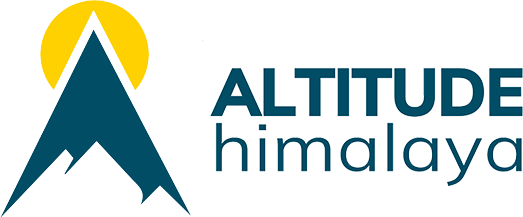

 Adventure
Adventure
 Couple
Couple
 Family
Family
 Luxury
Luxury
 Motorbike
Motorbike
 Photography
Photography
 Wildlife
Wildlife
 Yoga
Yoga
 Annapurna
Annapurna
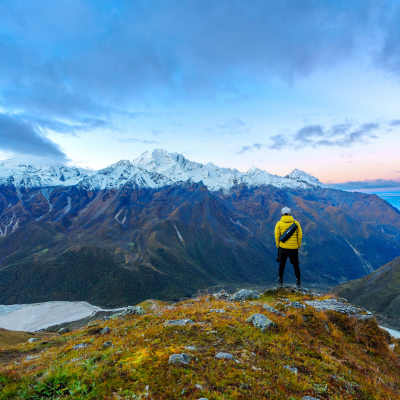 Langtang
Langtang
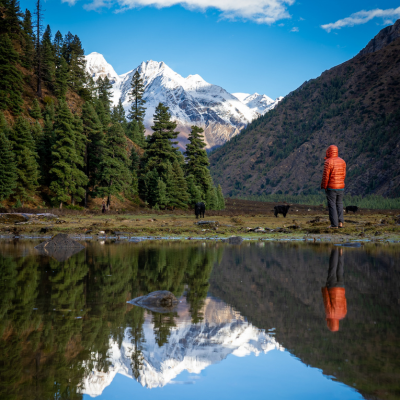 Dolpo
Dolpo
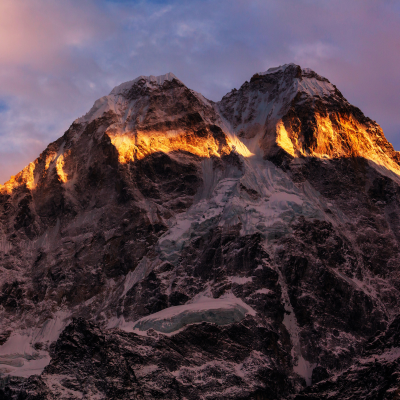 Eastern Nepal
Eastern Nepal
 Everest
Everest
 Manaslu
Manaslu
 Western Nepal
Western Nepal
